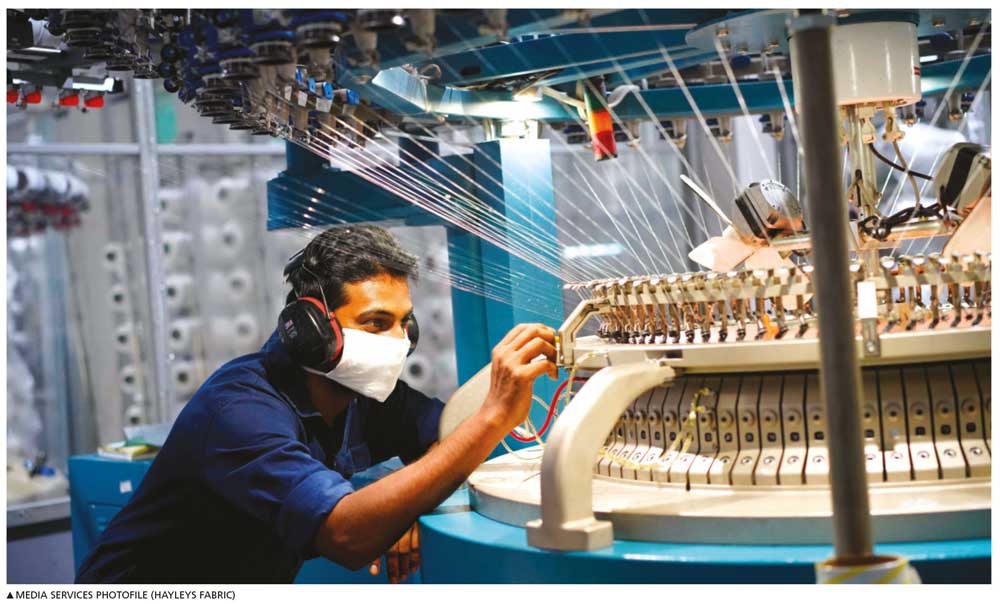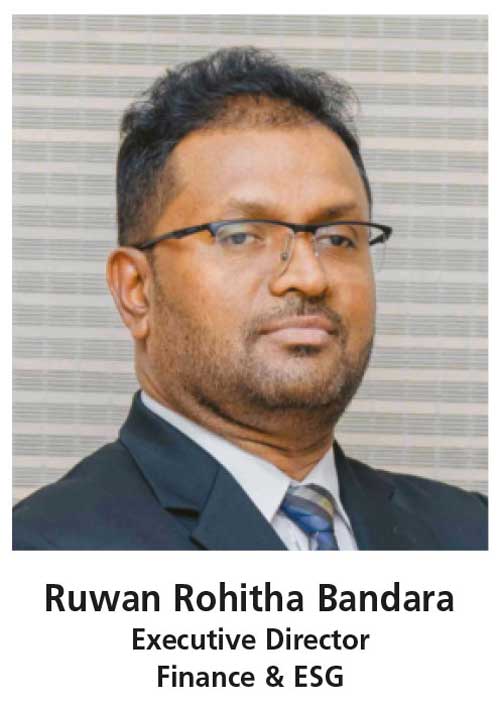Evolution of a textile leader

Q: Could you briefly tell us about the evolution of Hayleys Fabric?
A: Incorporated as Hayleys ADC Textiles in 1992 and Hayleys MGT Knitting Mills in 1993, the former became a fully owned subsidiary of the latter in 2001, and the first company in the textile and apparel industry to be listed on the Colombo Stock Exchange (CSE) in 2003.
Hayleys ADC Textiles then amalgamated with Hayleys MGT Knitting Mills in 2007 and launched its own fabric brand Inno. The company changed its name to Hayleys Fabric in 2015 to give its new business strategy an identity. It became the country’s largest fabric mill with the acquisition of South Asia Textiles in 2021.
Q: Corporate governance is considered a part of your organisation’s fabric. Could you elaborate on this?
A: Hayleys Fabric is a listed entity on the CSE and therefore, has public accountability. Our parent company Hayleys is also listed on the stock exchange. Therefore, adopting and practising corporate governance is mandatory.
Moreover, Hayleys Fabric and its subsidiary have been dealing with top Tier 1 global customers, and they expect us to implement and practise strong corporate governance.
Q: What practices are employed by Hayleys Fabric to ensure transparency?
A: We follow existing CSE listing rules and ensure that all new regulations are also adopted where relevant. Moreover, we follow and apply the Code of Best Practice on Corporate Governance issued by the Institute of Chartered Accountants of Sri Lanka (CA Sri Lanka).
We adopted the Integrated Reporting (IR) framework in our 2013/14 annual report and for financial year 2022/23, produced our ninth integrated annual report. The annual report is prepared in accordance with Global Reporting Initiative (GRI) standards in line with the Core option, and continuous annual improvements and additional disclosures in financial and nonfinancial reporting are undertaken.

In addition, we voluntarily adopted the Sustainability Accounting Standards Board’s (SASB) sustainability accounting standard for the apparel, accessories and footwear sector, and recommendations of the Task Force on Climate-related Financial Disclosures (TCFD).
To strengthen the reliability and transparency of these numbers and disclosures, two separate independent assurances were also obtained from Ernst & Young for the GRI, SASB and Integrated Reporting standards in the 2022/23 annual report.
Additionally, a plan was set early to adopt the new S1 and S2 sustainability accounting standards in the current financial year.
Q: How can Sri Lanka’s apparel industry improve its competitiveness?
A: Sri Lanka is a good commercial hub and the raw materials required for fabric can be imported from India with a very short lead time.
Overheads are on the rise due to the country’s rate of inflation and higher utility costs. The fluctuation of the US Dollar against the Sri Lankan Rupee and 30 percent income tax that is applicable to the export sector have negatively impacted businesses.
Nonetheless, the Sri Lanka’s textile and apparel industry has been able to maintain its quality.
Q: And how would you describe the competition and strategies that Hayleys Fabric employs to stay ahead?
A: Working with top Tier 1 customers requires sound strategy and innovation capabilities. At Hayleys Fabric, we allocate substantial funding annually through our corporate budget to innovation and development activities.
Hayleys Fabric has also recruited skilled and talented fresh graduates from the University of Moratuwa. Furthermore, the innovation of various new product types also plays a major role in facing industry competition.
Q: What are the key challenges faced by the textile and apparel industry?
A: The key challenges are seasonal pressure for price reductions and volatility in raw material prices; the impact of the global slowdown; and finding skilled labour and staff for knitting, dyeing, finishing, printing and brushing including fabric developments.
The increase in the country’s cost base, high volatility in the financial market (i.e. the US Dollar versus the Sri Lankan Rupee) and the steep corporate tax for the export sector are some other issues.
Q: And finally, what are your organisation’s future plans?
A: We are looking to shift entirely to biomass and solar power for renewable energy generation, and the use of liquefied petroleum gas (LPG) in both our plants. As of now, South Asia Textiles operates entirely on renewable energy and Hayleys Fabric is nearing the completion of a project to eliminate the use of fossil fuels.
In addition, we are presently moving into different fabric categories such as nylon and so on.
Furthermore, expansion plans – locally and overseas – are being explored.
We are also in the process of upgrading our technology to reduce energy use and improve productivity by replacing some machines.
Our objective is to always supply quality fabric to customers within the agreed lead time. To support this, continuous capex expenditure will be incurred to improve quality.

– Compiled by Allaam Ousman
Telephone 034 2297100 I Email info@hayleysfabrics.com I Website www.hayleysfabric.com
